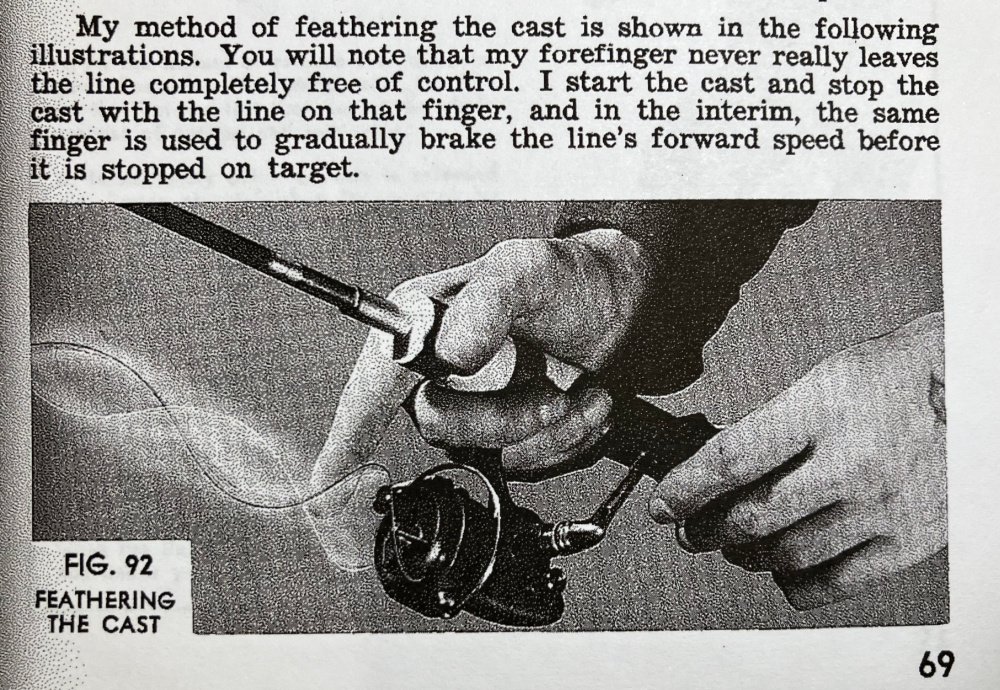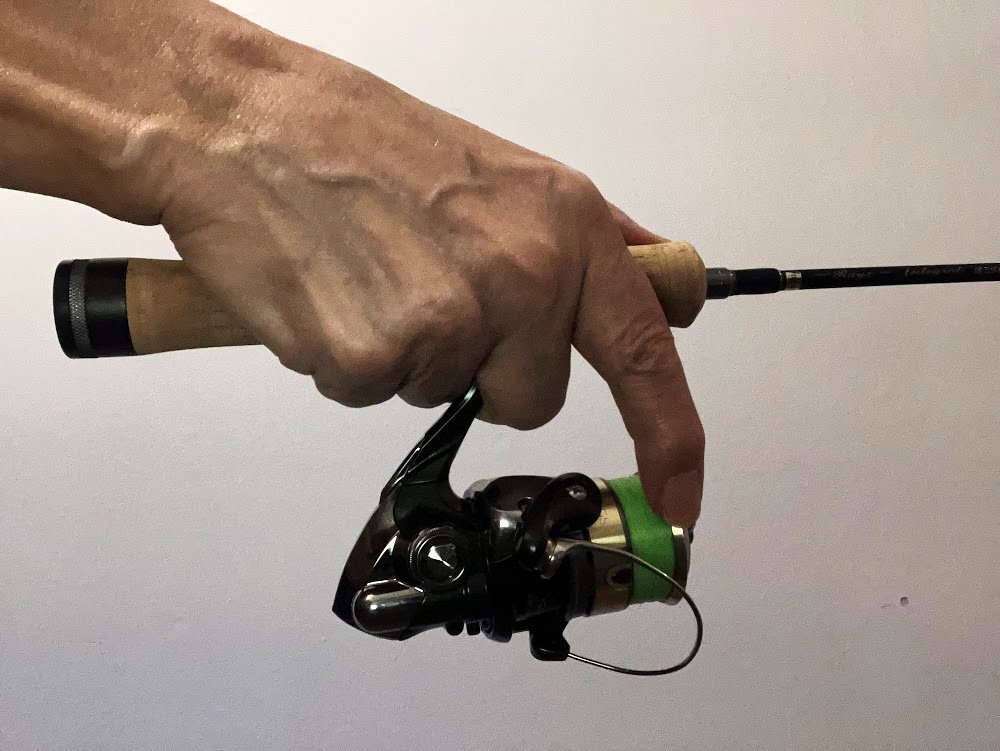Tariffs and Shipping Delays
All items that are in stock, listed to the right, are in the USA and are not subject to tariffs or shipping delays. If you want premium trout rods, they're here now.
Feathering a Spinning Reel
You know that feeling you get when you realize you've been doing something wrong for the last 60 years? You probably don't because you're probably not old enough. Feel free to substitute 50 years, or 40 years, or 30, or ever since the first time you picked up a spinning rod. I'm talking about feathering a spinning reel.
My whole life, no one ever mentioned it. I'd never seen anyone do it. I'd never read about it - at least not until just a few years ago when learned about, tracked down and read Erne St. Clair's 1961 book entitled The Modern Science of Spin Fishing. I didn't track down the book to learn how to feather a spinning reel, I wanted to learn his wave and snap casts. Instructions on feathering a spinning reel were in the book, though. I tried following the instructions but clearly didn't spend enough time practicing because I didn't notice any benefit.
By the way, a PDF file of the entire book is available free online. Google can find it for you.
What Erne St. Clair described was extending your index finger, down and in front of the reel so that the line flowing off the reel would brush against your finger.
 Erne St. Clair feathering a spinning reel.
Erne St. Clair feathering a spinning reel.By changing the position of your finger you could increase the friction, slowing the lure's flight, or catch the line and stop it entirely. Well, I tried it. I really did, but for me the difference between "no effect" and "immediate stop with rebound" was so small that I basically gave up and stopped making risky casts where a foot too far meant a lure lost to a log or a tree branch.
I think there is a better way. As with the Flip Cast, I didn't really "get it" until I saw a YouTube video by a Japanese stream fisherman, who described his method and a couple minor variations in great detail. Unfortunately, as with the Flip Cast video, it is in Japanese.
I will give a link to the video in a bit, but first, the basic difference between what the guy in the video does and what Erne St. Clair did is that instead of sticking your index finger out in front of the reel, the guy in the video places the tip of his finger lightly against the rim of the spool. If your touch is very light, you can feel the line play out. You can gently increase your finger pressure on the spool rim to slow the lure's flight, and with a little more pressure you can stop it. If pressure is applied very gradually, the lure will slow and finally fall but will not bounce back.
There is one variation that he mentions but recommends against, but which for me is preferred over his basic method. The difference is how you release the line when making a cast. His preferred method is to release the same way everyone is taught - after reeling in the line, pick the line up in the first joint of your index finger, open the bail, and when you make the cast let the line go by straightening your index finger. From there you can lightly place your finger on the spool rim to feather the cast.
 Index finger lightly touching the spool rim.
Index finger lightly touching the spool rim.For me, finding the spool rim with my finger immediately is not assured. If you miss, you either stop the cast abruptly or you have no feathering at all (which is pretty much what I experienced with the Erne St. Clair method). In my opinion, it is much easier to place your finger on the rim before opening the bail, and as you make your cast just lift your finger ever so slightly, which allows the line to play out. Your finger is always in the perfect position to apply a little more pressure to slow and then stop the cast.
The gradual slowing and stopping is important. It allows the lure to enter the water quietly. It also keeps slack out of the line so when you close the bail you have a tight line and can set the hook immediately on the occasions when a fish hits your lure as soon as the lure hits the water. Finally, with no slack in the line as you close the bail and start reeling, you pretty much eliminate loose coils of line getting onto your spool.
OK, enough preamble. Here is the video: https://www.youtube.com/watch?v=B_OSh9XygCk&t=4s (link opens in a new window). In YouTube, click the gear icon. Then click on Subtitles/CC. Then click on Japanese (auto-generated). On the next box, click on Japanese (auto-generated) again. Then click on Auto-translate. Then click on your preferred language. I find it helpful to click on the gear icon again and change Playback speed to .75 because at full speed the captioning does not always stay on the screen long enough to finish reading it.
You may prefer his standard approach or another one of his variations. Whichever you choose, this is by far the best and most clear explanation of feathering a spinning reel that I have found - even if you can't understand a word of Japanese. (Be sure to enable the auto-translated closed captions, though!)
If getting the translated closed captions is a problem just watch this video. It is pretty much self explanatory. Just understand that when he is loosening his finger pressure, you would do the same thing when casting.
https://www.youtube.com/watch?v=VjGmt8FjZv8
Header photo: Tenryu Rayz RZ4102B-UL, Shimano Calcutta Conquest BFS-HG ('17)
Warning:
The hooks are sharp.
The coffee's hot.
The fish are slippery when wet.
Whatever you do, do it with finesse!